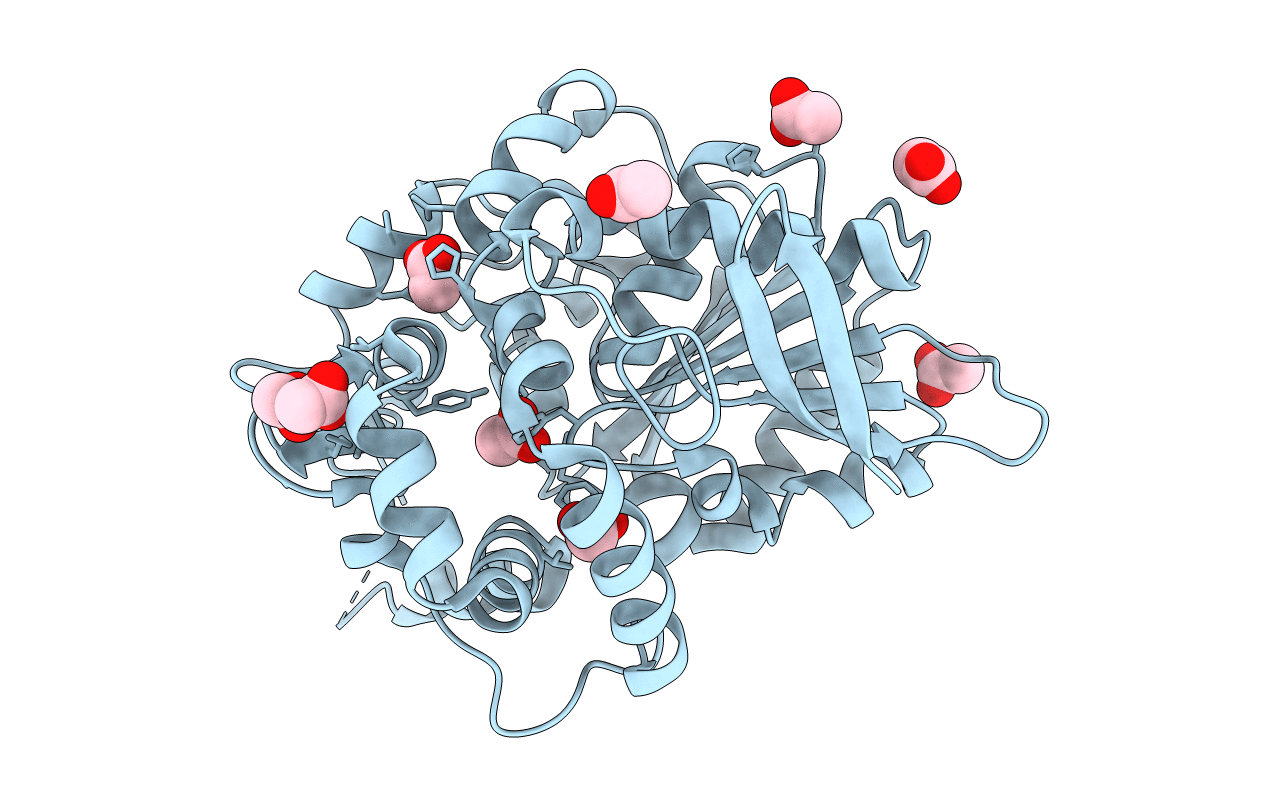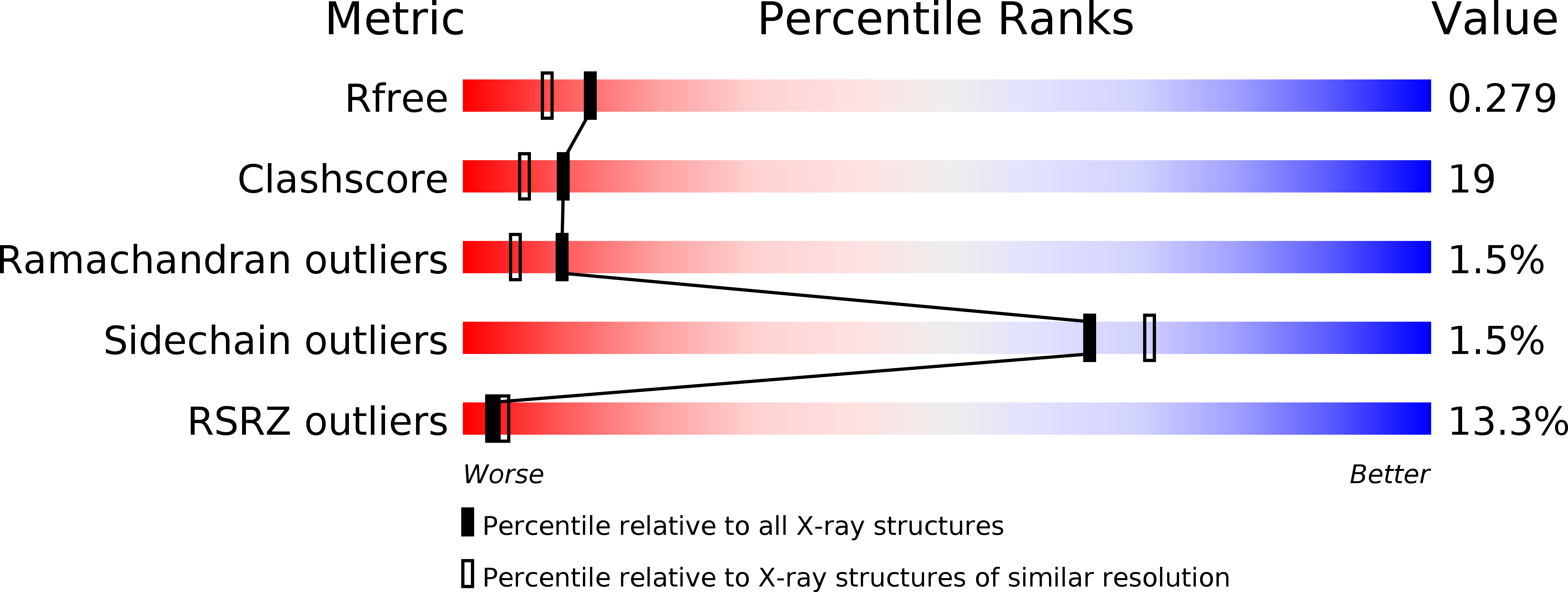
Deposition Date
2006-11-27
Release Date
2007-12-04
Last Version Date
2023-10-25
Entry Detail
PDB ID:
2E3J
Keywords:
Title:
The crystal structure of epoxide hydrolase B (Rv1938) from mycobacterium tuberculosis at 2.1 angstrom
Biological Source:
Source Organism:
Mycobacterium tuberculosis (Taxon ID: 83332)
Host Organism:
Method Details:
Experimental Method:
Resolution:
2.10 Å
R-Value Free:
0.27
R-Value Work:
0.23
Space Group:
P 41 21 2


